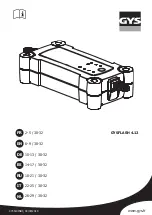
The Seat Belt System and How It Works
Why Wear Seat Belts
Wearing seat belts, and wearing
them properly, is fundamental to
your safety and the safety of your
passengers.
During a crash or emergency stop,
seat belts can help keep you from
being thrown against the inside of
the car, against other occupants, or
out of the car.
Of course, seat belts cannot com-
pletely protect you in every crash.
But, in most cases, seat belts reduce
your chance of serious injury. They
can even save your life. That is why
many states and all Canadian pro-
vinces require you to wear seat belts.
Important Safety Reminders
Seat belts are designed for adults
and larger children. All infants and
small children must be properly
restrained in child safety seats (see
page
20
).
Never let passengers ride in the
cargo area or on top of a folded-down
seat. Carry passengers in the rear
only when they are sitting in a locked,
upright seat, and are properly
restrained by seat belts.
Passengers should not stand up or
change seats while the vehicle is
moving. If they are not wearing seat
belts during a crash or emergency
stop, they can be thrown against the
inside of the vehicle, against other
occupants, or out of the vehicle.
A pregnant woman needs to wear a
seat belt to protect herself and her
unborn child (see page
10
).
Two people should never use the
same seat belt. If they do, they could
be very seriously injured in a crash.
Do not place the shoulder portion of
a lap/shoulder belt under your arm
or behind your back. This could
increase the chance of serious
injuries in a crash.
Do not put shoulder belt pads or
other accessories on seat belts. They
can reduce the effectiveness of the
belts and increase the chance of
injury.
Driver and Passenger Safety
Not wearing a seat belt
increases the chance of serious
injury or death in a crash.
Be sure you and your
passengers always wear seat
belts and wear them properly.
Main Menu
Table of Contents
▲
▼







































